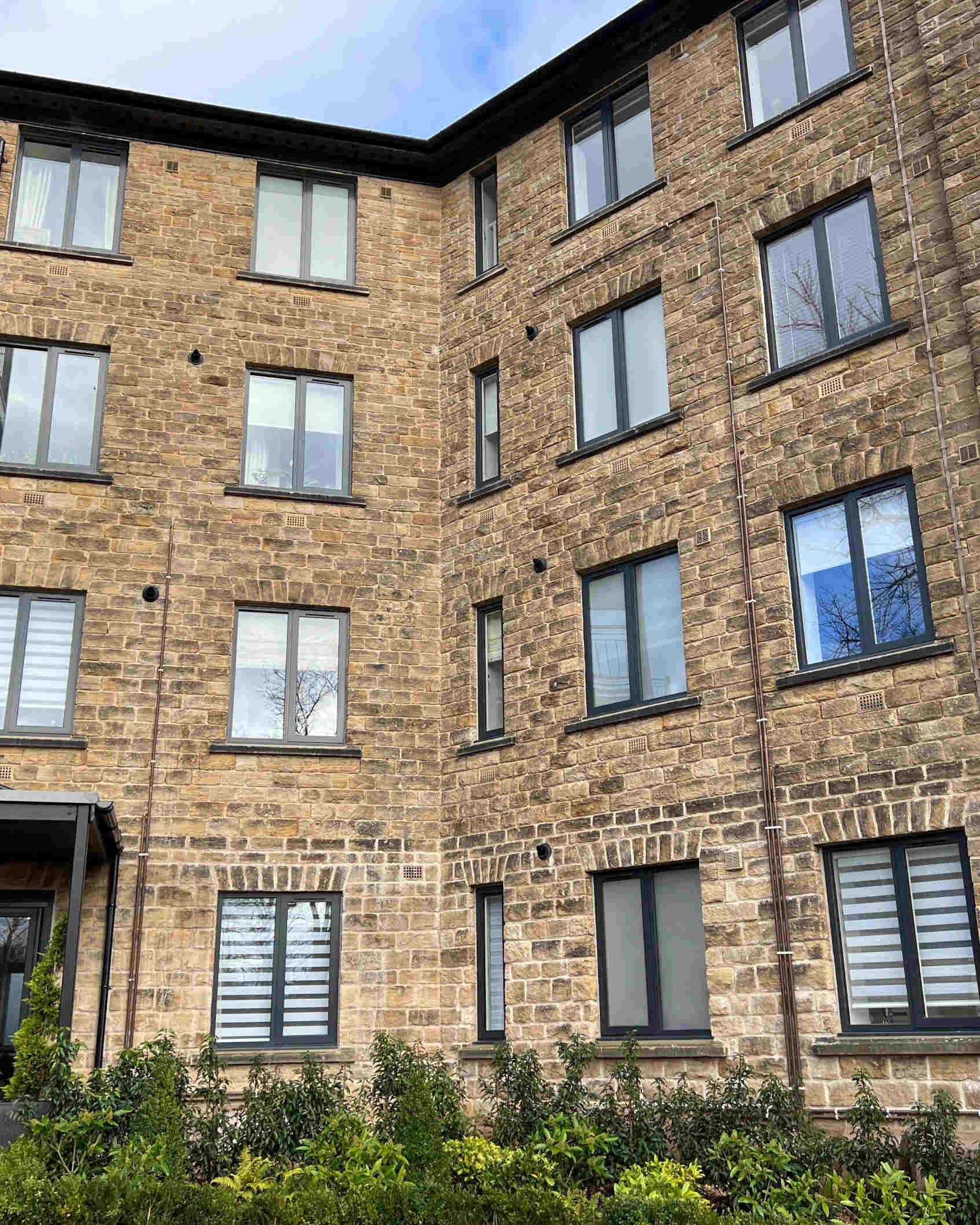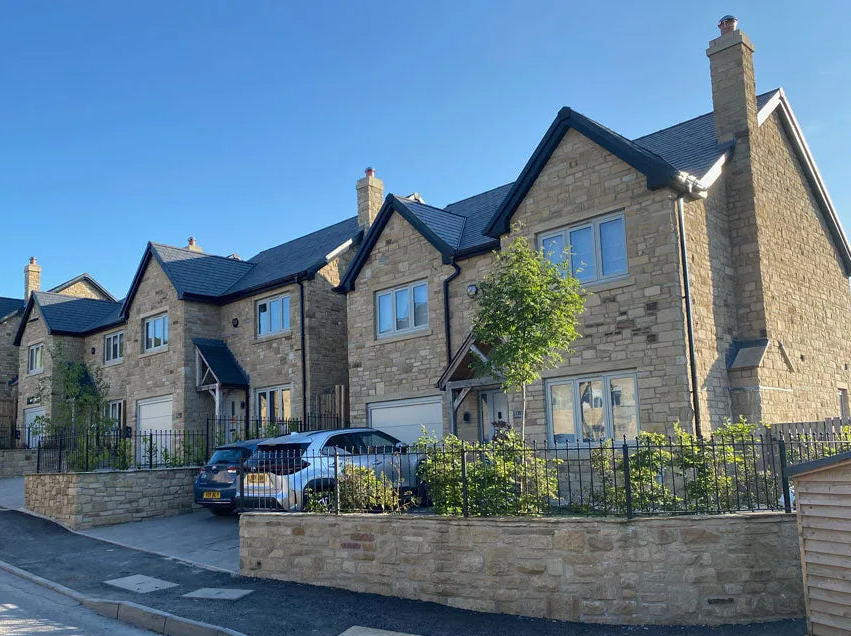Which Stone Cladding Style Is Best for Your Home?
Choosing stone cladding is rarely just about “stone or no stone.” The real decision is which stone – warm Cotswold-style limestone, cooler grey tones, reclaimed farmhouse stone with visible age, or crisp contemporary panel systems. Each option changes the character of a building in a very different way.
For many homeowners, architects and landscapers, the challenge isn’t deciding whether to use stone cladding at all, but narrowing down the right style, colour and format for the property. This guide looks at the main stone cladding styles available from Britannia Stone Company and how to match them to your home, setting and design ambitions.
Understanding the Main Stone Cladding Families
Although there are many individual products in the Britannia Stone range, most fall into a few clear “families” of style. Thinking in terms of these families makes it much easier to shortlist suitable options.
Warm limestones and sandstones
Cotswold-style and other limestone cladding products have an immediately recognisable warmth. Cotswold Stone Cladding, creams, buffs and honeyed tones sit comfortably in both village and suburban settings, and they tend to age gracefully, picking up a soft patina over time. These stones work particularly well on country houses, rural extensions, garden walls and house fronts where you want a traditional, welcoming feel.
Smoother-faced limestone cladding can also be used in more contemporary schemes – for example, on a simple, cubic extension – where the softer colour balances modern lines without feeling stark or overly sharp.
Cooler greys, slates and quartzites
f o. Slate cladding tends to feel crisper, more architectural and more overtly modern. Grey stone cladding can be an excellent choice for properties with dark window frames, zinc or slate roofs and strong geometric forms.
Used externally, darker stone cladding creates depth and contrast, especially when combined with lighter render or timber. Internally, it can form a striking backdrop to fireplaces or feature walls, provided lighting is handled carefully to avoid the space feeling too heavy.
Reclaimed farmhouse and barn stone
Reclaimed Farmhouse Stone Cladding sits in a category of its own. Salvaged from older buildings, each piece carries marks of age, weathering and historic workmanship. Colours are often subtly mixed – buffs, browns, soft greys – and edges can be more irregular.
This style is particularly suited to barn conversions, farmhouses, cottages and new-builds that aim to sit comfortably within older streetscapes or rural landscapes. Because reclaimed stocks are finite and more labour-intensive to prepare, they are often treated as a premium choice for projects where genuine heritage character is non-negotiable.
Modern Z-panel systems
Z-panel stone cladding panel systems use interlocking sections of stone fixed to a backing, allowing for very quick installation and a clean, contemporary finish. They are especially useful for feature walls, commercial façades, garden structures and projects where the visual impact of natural stone is desired without extensive hand-laying.
Panel systems come in a range of colours and stone types – from light, subtle tones through to dramatic, multi-tonal mixes – and they sit comfortably alongside render, metalwork and large areas of glazing.
Matching Stone Styles to Your Property Type
The same stone can look very different depending on the style of property and its surroundings. When deciding on a stone cladding style, it helps to think about context first.
On older rural homes, such as cottages and farmhouses, warm limestone or sandstone cladding and reclaimed farmhouse stone tend to feel the most authentic. Their tones echo traditional British masonry and tie into dry-stone walls, hedgerows and established planting. Using these stones on extensions or garden buildings can make new work feel as though it has always been there.
Suburban properties and traditional brick-built houses often benefit from a slightly more controlled approach. Here, softer creams and buffs can lift and refresh dated façades without clashing with existing brickwork. Stone might be used on a new porch, a gable, a ground-floor bay or a garden wall, rather than across the entire house. In these cases, limestone cladding with a relatively regular course pattern usually harmonises best.
On modern homes and contemporary extensions, cooler greys, ashlar-style cuts and certain Z-panel systems come into their own. Paired with slimline windows, metal roofing and simple detailing, they help to create clean, confident elevations that still feel rooted in natural materials.
Colour, Texture and Jointing: The Details That Change Everything
Once you have narrowed down the family of stone that suits your property, the details of colour, texture and jointing will determine the final look.
Lighter stones – creams, buffs and pale greys – tend to feel open and relaxed. They reflect more light and can make compact plots or shaded elevations feel less heavy. Darker stones, including slate and some quartzites, create contrast and drama, and are often chosen for feature areas rather than full façades.
Texture also plays a major role. Heavily textured, split-faced stones catch the light and cast shadow, emphasising depth and craftsmanship. Smoother or lightly riven surfaces feel more refined and understated. Reclaimed and farmhouse stones usually show more irregularity, which adds richness but needs careful consideration when pairing with very modern elements.
Mortar joints should never be an afterthought. Tight, fine joints create a more formal, architectural result, particularly with ashlar-style stones. Slightly wider, more irregular joints suit rustic or reclaimed materials and help to reinforce the sense of age. Even the colour of the mortar – from warm buff to cool grey – will subtly shift the overall tone of the wall.
Interior vs Exterior Use
While most people first think of stone cladding on external walls, the same materials can be highly effective indoors.

Warm limestones and reclaimed stones work particularly well around fireplaces, in open-plan living spaces and along circulation routes such as hallways and stairwells. They introduce texture and visual interest without relying on bold colour. In contrast, darker slates and quartzites can create a dramatic backdrop for media walls or dining areas, especially when paired with considered lighting.
Externally, the focus is often on weathering and longevity. Natural stone is inherently durable and frost-resistant when correctly detailed, which is why it remains such a trusted choice for exposed façades, boundary walls, garden structures and outdoor kitchens. Panel systems are especially popular outdoors where quick installation and crisp lines are important – for example, on feature gables or sections of garden retaining wall.
When planning a scheme, it can be helpful to carry the same stone from outside to inside at key transition points – for example, wrapping a corner between a terrace wall and an adjacent kitchen wall – to create a sense of continuity.
Sustainability and Provenance
For many projects, environmental impact is now a central consideration. Stone cladding can play a positive role here, particularly when the source and format are chosen carefully.
Reclaimed farmhouse and barn stone cladding is the most obviously sustainable option, giving a second life to materials that have already stood for decades. It avoids the need for fresh quarrying and ensures that the embodied carbon in the original masonry is not wasted. Reclaimed stones also sit comfortably within conservation-led schemes and rural landscapes.
Newly quarried natural stone can also form part of a lower-impact approach. Its longevity means it rarely needs replacing, and at the end of a building’s life it can often be salvaged and reused. Choosing stones from responsible sources and, where possible, from geologically appropriate regions helps to keep transport impacts under control.
For clients pursuing formal sustainability or ESG goals, stone cladding can be integrated into a broader strategy that includes efficient insulation, careful detailing and long-term adaptability of the building.
How to Shortlist the Right Stone Cladding Style
With so many options available, it can be tempting to make a decision purely from images, but seeing stone in person is almost always worthwhile. Subtle tonal shifts, surface textures and jointing patterns are far easier to judge when you have physical samples to hand.
A simple, practical process is to start by deciding whether your project feels more aligned with warm traditional stone, cooler contemporary stone, reclaimed character, or modern panel systems. From there, narrow down two or three candidates and order samples for each. Compare them in natural daylight against existing walls, roofs, windows and surrounding planting.
If you are still unsure, it can help to look at finished project images for each style – for example, cottages in warm limestone, modern homes in grey ashlar, or garden structures in slate or quartzite – to see how similar stones behave at full scale.
For more technical detail on fixing methods, substrates and performance, you can refer to our blog; Everything You Need to Know About Stone Cladding, and then come back to this style-focused overview to refine the aesthetic choice.

Final Thoughts
The best stone cladding style for your home will always be the one that balances architecture, setting and personal taste. Warm Cotswold-style limestones, cool grey slates, reclaimed farmhouse stones and crisp Z-panel systems all have their place in British projects; the key is understanding what each brings to a façade or feature wall.
By looking carefully at colour, texture, jointing and context – and by handling samples rather than relying solely on screens – you can choose a stone cladding style that feels as though it truly belongs to your home, and will continue to do so for many years to come.
BSC-B-34







